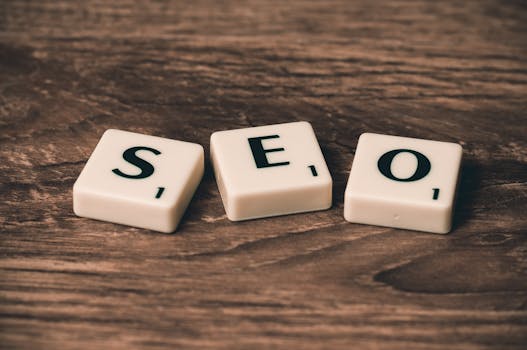Creating effective business materials is essential for communicating your brand message and engaging your audience. High-quality materials can enhance your professional image and build trust with clients. From brochures to business cards, each item plays a vital role in your overall marketing strategy.
This article will guide you through the process of designing various business materials that reflect your brand’s identity. By following the outlined steps, you will ensure that your materials are not only attractive but also functional and impactful. Let’s explore essential tips and best practices that can elevate your business materials.
Understanding your audience and selecting appropriate formats are crucial for successful business materials. As you read on, you’ll discover the tools and strategies to create materials that resonate with your target demographic, ultimately driving conversions and fostering relationships.
Understanding Your Brand Identity
Your brand identity is the foundation of all your business materials. It encompasses your values, mission, and the unique traits that set you apart. Start with a clear understanding of your brand’s purpose.
Consider how your audience perceives your brand. This perception influences their decisions and interactions. Make sure your materials consistently reflect your brand’s voice, whether it’s formal or casual.
Elements such as your logo, color scheme, and typography also contribute to your brand identity. Maintaining consistency across all materials solidifies your image in the minds of consumers and helps in building recognition.
Take time to develop a brand style guide. This document serves as a reference for anyone creating materials on behalf of your business. It ensures that all outputs align with your established identity.
Ultimately, a strong brand identity is critical in forging connections and establishing credibility. Every piece of material you create should portray this identity to enhance customer trust and loyalty.
Identifying Your Target Audience
Before designing your business materials, it is essential to identify your target audience. Understanding who you are speaking to allows for tailored communications that meet their needs.
Conduct market research to gather insights about your audience. Surveys, interviews, and focus groups can help you uncover demographics, preferences, and pain points relevant to your offering.
Analyze existing customer data to determine trends and interests. This information can lead to significant improvements in your material messaging. Ensure your materials directly address their concerns and needs.
Segmenting your audience may also be beneficial. Different groups may require distinct approaches, so consider creating multiple versions of your materials that cater to various segments.
By having a targeted approach, your business materials will resonate more profoundly, making it easier to attract and retain clients while also increasing your overall conversion rates.
Choosing the Right Types of Materials
Selecting the appropriate types of business materials is crucial to effectively communicate your message. Consider what formats best suit your objectives and audience preferences. Common options include brochures, flyers, and business cards.
Brochures and flyers are excellent for providing detailed information about your products or services. They allow for more extensive content while still being visually appealing to potential customers.
Business cards are essential networking tools, leaving a lasting impression. Ensure your card design aligns with your brand identity and includes all necessary contact information clearly and concisely.
Digital materials also play a vital role in today’s business landscape. Think about email newsletters, social media graphics, and website content that can further enhance your outreach efforts.
Balancing digital and print materials ensures you cater to various audience preferences. It guarantees that you maximize exposure and engagement across multiple channels.
Designing Eye-Catching Visuals
Visual design is a pivotal aspect of creating business materials. Effective visuals can capture attention and convey messages quickly. Choose colors that align with your brand identity and evoke intended emotions.
Typography is equally important; ensure readability while enhancing your brand’s personality. Use font sizes and styles consistently across all materials for a cohesive look.
Incorporate high-quality images and graphics to illustrate your message. Visuals should be sharp, professional, and relevant to your content while avoiding clutter or confusion.
Leverage whitespace effectively. It helps focus the viewer’s attention on important elements while preventing overcrowding of information that can overwhelm your audience.
Investing time in thoughtful design will yield dividends in engagement and comprehension. Your materials should convey professionalism while being visually appealing to potential clients.
Creating Compelling Content
Your content should be clear, concise, and compelling to hold your audience’s attention. Start by defining the key message you want to communicate in each material.
Use headlines and subheadings effectively to break down the content into digestible sections. This layout helps guide readers and makes it easier for them to find pertinent information.
Incorporate storytelling elements where relevant. Relatable narratives can create a connection with your audience, making your materials more memorable and significant.
Avoid jargon and overly technical language that may alienate potential customers. Strive for clarity and simplicity while still conveying authority in your subject matter.
Finally, include a call-to-action that prompts your audience to take the next step, whether that means visiting your website, signing up for a newsletter, or making a purchase.
Utilizing Technology for Design
Technology offers a variety of tools that streamline the design process for business materials. Software like Adobe Illustrator and Canva provides versatile options to cater to designers of all skill levels.
Explore online templates as starting points for your designs, which can save time while ensuring a professional outcome and consistency in branding across materials.
Utilizing graphic design tools allows for experimentation with colors, typography, and layouts to find the best fit for your needs. Different functionalities can enhance your creativity and efficiency.
Collaborating with designers through platforms like Fiverr or Upwork can augment your capabilities if you prefer a more hands-off approach. Professional designers can bring your vision to life.
Embracing technology can greatly improve the quality and effectiveness of your business materials. Transparency in the workflow is key to ensuring the process meets your expectations.
Reviewing and Revising Your Materials
Reviewing and revising your materials is crucial before distribution. Always proofread for spelling, grammar, and punctuation errors, as these mistakes can tarnish your credibility.
Seek feedback from team members or trusted individuals to gain different perspectives. Constructive criticism is an invaluable resource for refining your materials.
Assess the effectiveness of your design elements. Ensure every component serves a purpose and contributes to the overall message of your materials.
Test print versions first to gauge the appearance and feel. This allows you to make necessary adjustments before finalizing large quantities.
Final revisions should align with your intended message and audience expectations. Polished materials strengthen your brand presence and enhance customer engagement.
Conclusion
Creating high-quality business materials is essential for effective communication and marketing. By understanding your brand, audience, and design elements, you can create impactful materials.
Remember that these tools are not just physical representations of your business; they reflect your core values and mission. Properly executed, they can enhance your professional image and foster long-lasting relationships.
Invest the time in planning, designing, and revising your materials to ensure they resonate with your target audience. Doing so will lead to increased engagement and drive business success.
Utilize the technology available for design and embrace feedback to perfect your approach. By continuously refining your materials, you can achieve remarkable growth and brand recognition.
In summary, the journey of creating effective business materials is an investment toward building a solid foundation for communication and outreach in your business strategy.


